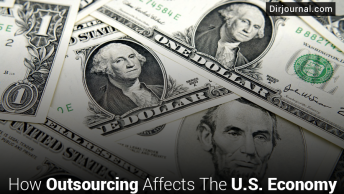The increase in gas prices have hit people very hard and increasing number of motorists in the U.S. are looking for alternatives.
This desperate need to control the rising costs, has given rise to the new fad called “hypermiling.” This is a radical driving technique that is designed to make use of every bit of power from the tank, which doubles the gas mileage even in vehicles that are guzzlers.
Hypermiling has become very popular with drivers worldwide, as concern over the increasing price of gas and environmental issues heightens. Whatever their reason, whether it is to save a few dollars or aim at helping the environment, hypermiling is being seen as the smart way to drive.
The practice of “hypermiling” was started by a few truckers a few years ago, but in fact it existed for a long time and the earlier name in 1936 was Mobil Economy Run, and during World War II gas rationing led people to use these techniques.
Hypermiling means pumping up the tires to their maximum pressure, higher than the recommended levels in the car manuals; using low viscosity engine oil (low weight engine oil), which is only filled to the low-level mark, and drafting behind other vehicles on the highway to reduce the aerodynamic drag, which is controversial. When tires are inflated to their maximum, less energy is required for the vehicle to move.
Although hypermiling is an advanced technique, other approaches that are well-known are followed too, such as gentle acceleration, slow speed, not idling excessively as well as removing the cargo racks to cut down on the aerodynamic drag.
Speed is an important factor in maintaining fuel efficiency while hypermiling. Maximum fuel efficiency can be experienced when driving with no stops and throttling less, in the higher gear. The speed differs from vehicle to vehicle, although it is said to be in the range of 40 – 50 mph.
Generally fuel efficiency increases when there is less of braking and acceleration. One of the main strategies of hypermiling is to keep the eyes open and drive in such a way that you watch where you are going carefully, all the while trying to minimize accelerating and braking. If one has to accelerate, it has to be done gently. This is the reason driving at a high speed does not help as it is not possible to slow the vehicle easily and also most of the energy is used up in using the brakes, because at fast speeds kinetic energy is higher. Medium speed gives the driver enough time to slow down without using the brake extensively.
The thing most hypermilers stress on is to brake from a good distance when reaching a red signal, so that they can just sail through the green signal smoothly instead of braking at the red light. This has to be done by driving at a slow speed for a longer time. It is best to avoid complete stops wherever possible.
Another strategy followed by hypermilers is to use the coasting method instead of accelerating and braking. Although, coasting with the engine off has raised several controversies, because of the safety issues it may pose, it is considered to be another efficient way of slowing the vehicle down.
Hypermiling exceeds the United States Environmental Protection Agency (EPA) fuel efficiency by bringing about changes in driving habits.
The biggest concern for the public is the rising price of gasoline, even more than health care and jobs. People can save huge amounts of money on gasoline using the hypermiling technique.
Analysts believe that if every vehicle in the U.S. can run 25 km/liter, there would be no need to import oil. They feel that most of the hypermiling techniques are sensible.
The only thing that is a little scary to all concerned is drafting behind fast moving trucks as it could have the potential for highway accidents.
People always had fun going at fast speeds and nothing could stop them from speeding and getting into trouble, but gasoline prices could just do the trick. While hypermiling is a wonderful way to get people to go easy with the accelerator, it can also save a lot of gas leading to resolving several issues at the government level. Fuel efficiency is also good for the environment.












